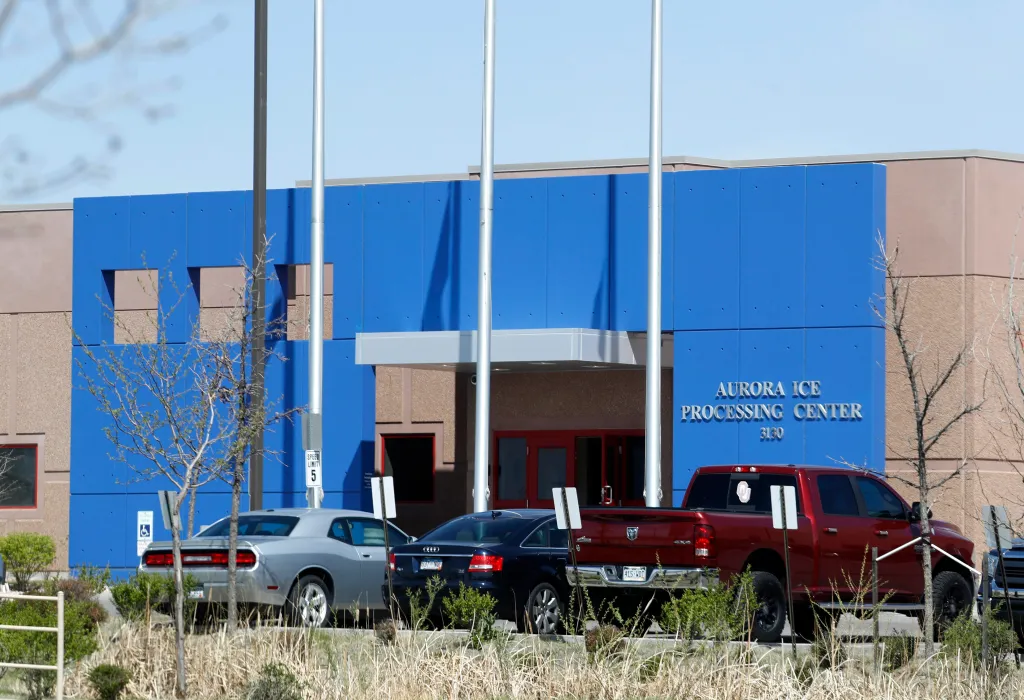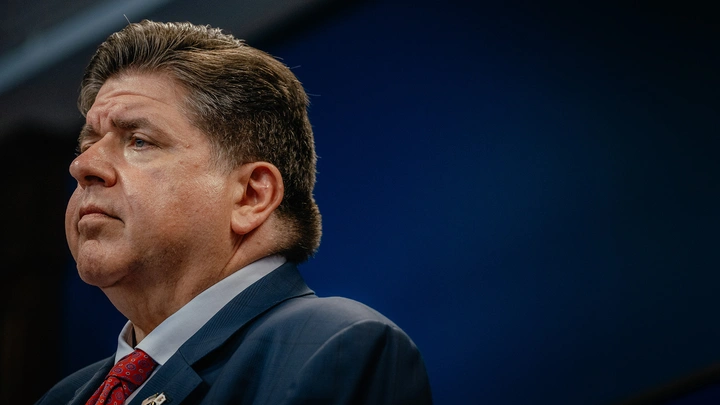Copyright forbes

The shutdown has made a difficult funding environment even more perilous for non-profits that were already facing a funding crunch. The United States is now deep into a government shutdown that has shuttered a wide range of federally supported programs, from early-childhood education centers to environmental projects. The shutdown’s reach touches every part of the nonprofit ecosystem, piling new uncertainty onto a sector already weakened by severe funding cutbacks since the new administration took office. In late September, Diane Yentel, president and CEO of the National Council of Nonprofits, warned about the repercussions of a government shutdown. “Without reliable access to the funding needed to cover payroll and other expenses, these organizations may have no choice but to cut back on services, reduce staff, or even close their doors,” she said. A month later, her warning has become a description of reality instead. With no end to the shutdown in sight, housing programs, hunger-relief networks, medical research grants, and arts institutions that depend on federal partnerships are sliding deeper into trouble from which some may find it difficult to recover. Because federal agencies cannot issue payments during a shutdown, nonprofits relying on contracts or reimbursements are cut off until Washington reopens, leaving leaders with a narrow set of options. Many are tapping emergency reserves, taking out loans, or scaling back operations, sometimes all at once. Each day that funding stalls the underlying uncertainty compounds, and more organizations are forced to make triage decisions that trade off their services with commitments made to staff and the community. MORE FOR YOU For leaders in the space it’s a double squeeze that feels like it’s been years in the making where long-term federal cuts have already thinned their margins, and now the shutdown threatens to erase what little buffer remains. A perfect storm, years in the making This shutdown arrives on the heels of several years of federal budget cuts and policy changes that have already weakened nonprofit funding streams. Since taking office in 2025, the Trump administration has canceled or frozen roughly $425 billion in federal funds across health care, arts, education and other sectors. These unprecedented funding freezes that represent more than half of the whole sector’s estimated payroll have caused chaos at the state and local level, blowing holes in budgets for agencies and nonprofits. The White House framed many of the cuts and rescissions as efforts to claw back spending from programs it deemed “woke” or ideologically biased. Now the shutdown is compounding the damage from those earlier reductions, and they are hitting nonprofits that were still recovering from pandemic-era shifts and fiscal tightening where charitable giving itself declined since the COVID-19 peaks. In short, the financial cushion for nonprofits had already worn thin before the shutdown, thanks to a one-two punch of ideological funding pullbacks and austerity that had led to 65% of non-profit leaders identifying general revenue as their greatest concern even before the shutdown. For nonprofit leaders, the convergence of a shutdown and earlier cuts is a worst-case scenario a “double-trouble” stress test for both their operations and their missions. The first-order impacts are immediate and severe. With federal payments halted, cash flow evaporates, and many organizations must weigh furloughs, service suspensions, or outright closures just to stay solvent. Nonprofits that depend on reimbursement models contracting with the government for foster care, homeless shelters, refugee resettlement, and similar programs, are in the toughest position of all. They must front expenses for staff and services without knowing when, or if, repayment will arrive. For many, it’s a cruel paradox where the more essential their work becomes during a crisis, the less certain their ability to sustain it. Over the past decade, nonprofits have become increasingly reliant on federal funding streams without building the kind of bipartisan consensus needed to protect their missions from political shifts. The result is a fragile dependency that leaves even nonpartisan causes exposed to partisan crossfire. Much like USAID, which has at times been hailed as a symbol of American generosity and now derided as an ideological instrument, many domestic nonprofits are caught in the same bind where they too essential to cut outright, yet too politically fraught to fully support. As government dollars became a larger share of nonprofit budgets, fewer leaders invested in the kind of diversified funding or public goodwill that could buffer them from ideological swings. Grants grew larger but narrower, often tied to specific policy agendas rather than broad public mandates. When those agendas changed, the safety net thinned. The shutdown has merely revealed how deep that dependency runs. What many miss amidst the storm is that the consequences don’t fall on the organizations themselves as much as on the communities they serve. Each missed grant and delayed reimbursement means fewer children in classrooms, fewer families with food or shelter, and fewer clinics open when they’re needed most. It’s a cost that compounds quietly one budget line at a time, until the social infrastructure meant to hold society together begins to fray. If the first half of the crisis is financial, the second is human. Angela Williams, president and CEO of United Way Worldwide, sees the shutdown as that is now putting 42 million Americans at risk of losing their SNAP benefits as an amplifier of existing fragilities. “Uncertainty, stress, and disruptions to vital services that occur as a result of a federal government shutdown exacerbate existing inequities,” Williams explains. “For low-income families, for example, even a short disruption in SNAP or rent support can trigger spirals of housing instability, job loss, or health decline. Unfortunately, so many of our systems are not designed for resilience. They’re brittle.” Williams emphasizes that much of United Way’s work happens behind the curtain. “At United Way, our role is to meet people where they are with dignity, immediacy, and care. And that often means doing the invisible work of stitching together networks, volunteers, and funding streams behind the scenes.” During crises like this one, that invisible work becomes visible in the form of 211 , the national hotline United Way helps operate to connect people with food, housing, and health assistance. “ I’m proud that United Way stands ready to coordinate backup and surge support to 211 call centers during times like this when we know people require immediate help with access to food, housing, and meeting other basic needs, and when calls may come in at an increased pace.” Behind every policy lapse and delayed payment lies a growing queue of families waiting for help, and a small army of nonprofit workers trying to keep the safety net intact. And, across the nonprofit world that suddenly finds itself with a net with more holes than before, that mix of empathy and execution is defining leadership in this moment. How Non-Profit Leaders are Navigating the Shifting Landscape It is no surprise that nonprofit leaders across the board are now embracing a mentality of resilience and innovation to weather this storm. Many leaders are drawing on lessons learned from past crises and some hard-won wisdom to guide their teams through uncertainty. “In the moment it can feel like a storm with strong winds, you need to be rooted in solid ground to face the storm,” says Edgar Sandoval Sr., CEO of World Vision, a global Christian humanitarian organization that has operated through 15 different U.S. administrations. Sandoval explains that for his team, faith and mission are the bedrock in turbulent times. “What grounds us is our purpose. We’ve weathered many storms by planning for the best and worst cases and handling everything in between,” he says. World Vision’s leadership runs rigorous scenario planning exercises to prepare for funding shortfalls, mapping out what to cut if necessary and what can’t be compromised, and communicates constantly with staff and partners. “It’s critical to do two things: don’t sugarcoat the challenges, but don’t be an alarmist either,” Sandoval notes, advocating for a transparent approach balanced with hope. That measured candor, coupled with what he calls a “Believe, Belong, Become” mantra to keep his team motivated, helps the 75-year-old nonprofit adapt without panic. “Be ready to give and receive grace,” Sandoval adds. “In challenging times, we’ll make mistakes, but we learn and keep moving on.” During recent U.S. funding cuts, World Vision had to pause certain projects, but Sandoval focused on “blocking and tackling”, finding alternate funding sources, rallying donors, and doubling down on lifesaving programs, rather than seeing it as a failure. “We’ve been doing this for 75 years; we know it works,” he says of the organization’s mission, pointing out that every 10 seconds World Vision is still able to bring clean water to someone in need. That continuity of impact, even in a dark season, reinforces morale. “The world may seem very dark now, but there are a lot of ways to do good, those stories don’t get enough attention,” Sandoval reflects, emphasizing the rewards of sticking to one’s values. François De Kerret, co-founder and CEO of Zeffy, a zero-fee fundraising and donor management platform for nonprofits, has a bird’s-eye view of how organizations and donors are behaving in this crisis. He notes that donor psychology tends to shift in tough times. “In times of crisis, we see fewer people giving, but those who do give, give more,” De Kerret says, describing a trend where the donor pool narrows but loyal supporters dig deeper into their wallets. The result, he explains, is that overall fundraising totals can stay surprisingly steady even if some larger gifts are postponed—but the mix often shifts. During the COVID-19 pandemic, for instance, many charities saw average gift sizes increase as committed donors rallied, even though some supporters had to pause their contributions. De Kerret’s team at Zeffy has processed nearly $2 billion in donations and often uses those insights to advise nonprofits on fundraising strategies. One takeaway he highlights is that organizations that continue to engage their communities, rather than retreat, tend to fare better. “Don’t assume donors can’t or won’t give,” he adds. “Focus on impact data and show exactly how each dollar helps.” A second takeaway, De Kerret says, is the importance of diversification. “Crises don’t affect all funding sources equally—some are more resilient than others. That’s why diversification matters, whether it’s balancing grants with individual donations or using multiple ways to reach supporters like peer-to-peer, events, and digital campaigns. It’s what protects your mission long term when everything else feels uncertain.” For many leaders, the current crisis is accelerating a shift that’s already underway: running nonprofits with the strategic discipline of a business, because mission alone isn’t enough to ensure impact. “In many ways, running a nonprofit today requires the same rigor and resilience as running a corporation,” says Janti Soeripto, President & CEO of Save the Children US, underscoring that nonprofit leaders must blend mission with a sharp eye on operations. “People forget we’re operating a complex enterprise that just so happens to be mission-driven.” Leading one of the nation’s largest international nonprofits, with a portion of its budget supported by U.S. government grants, Soeripto has learned the art of balancing purpose with performance. Navigating stringent compliance requirements, shifting political winds, and global crises, she’s focused on ensuring that accountability never comes at the expense of innovation. “We receive government funding, which means we must be highly compliant— navigating politics, sanctions, and all that comes with delivering on behalf of the taxpayer,” she explains. “But that can’t make us risk-averse or slow to adapt. We have to keep pushing ourselves and asking: How can we do better, reach more children, scale faster, or operate more efficiently?” Government grants effectively come with strings that can feel like substitute “market signals”: detailed regulations, reporting obligations, audits, and the constant threat of budget changes. Soeripto’s challenge is to ensure that this level of oversight doesn’t limit innovation. Rather than retreating in the face of uncertainty, Save the Children is leaning in and investing in technology to drive efficiency and impact, even as funding tightens. Like De Kerret, Soeripto emphasizes the importance of financial diversification, noting that her team regularly reviews the organization’s revenue mix to manage risk and avoid overreliance on any single source. “We constantly ask ourselves: Are we too dependent on one stream of income?” The nonprofit’s leadership team runs scenario planning not only for budget cuts, but also for geopolitical disruptions that could affect their work across the more than 100 countries where Save the Children operates. With over two decades of experience spanning both the public and private sectors, Soeripto leads Save the Children like a business, which emerges as an essential approach in the uncertainty of today. This business-like vigilance, combined with a humanitarian heart, is what’s helping the organization maintain life-saving programs for children and families in the U.S. and around the world, despite the funding crunch. “At the end of the day, no one’s going to send us a market signal or a stock price,” Soeripto says. “We have to create our own internal signals that we’re doing the right work, and if not, be willing to disrupt ourselves and adapt.” The convergence of cuts and the shutdown has become both a financial and moral test for nonprofit leaders. Yet amid the uncertainty, many are responding with the discipline of operators and the resolve of mission-builders. They’re tightening liquidity, pooling resources, sharing staff, and using technology to bridge funding gaps. They’re learning to plan for volatility rather than stability, to communicate transparently, and to keep their people grounded in purpose. Across the sector, a quiet truth is emerging of how resilience is now a requirement instead of a virtue. What began as a fiscal crisis has become a leadership crucible that is revealing how far ingenuity and stubborn hope can go in keeping the country’s social fabric together, one non-profit organization at a time. Editorial StandardsReprints & Permissions



